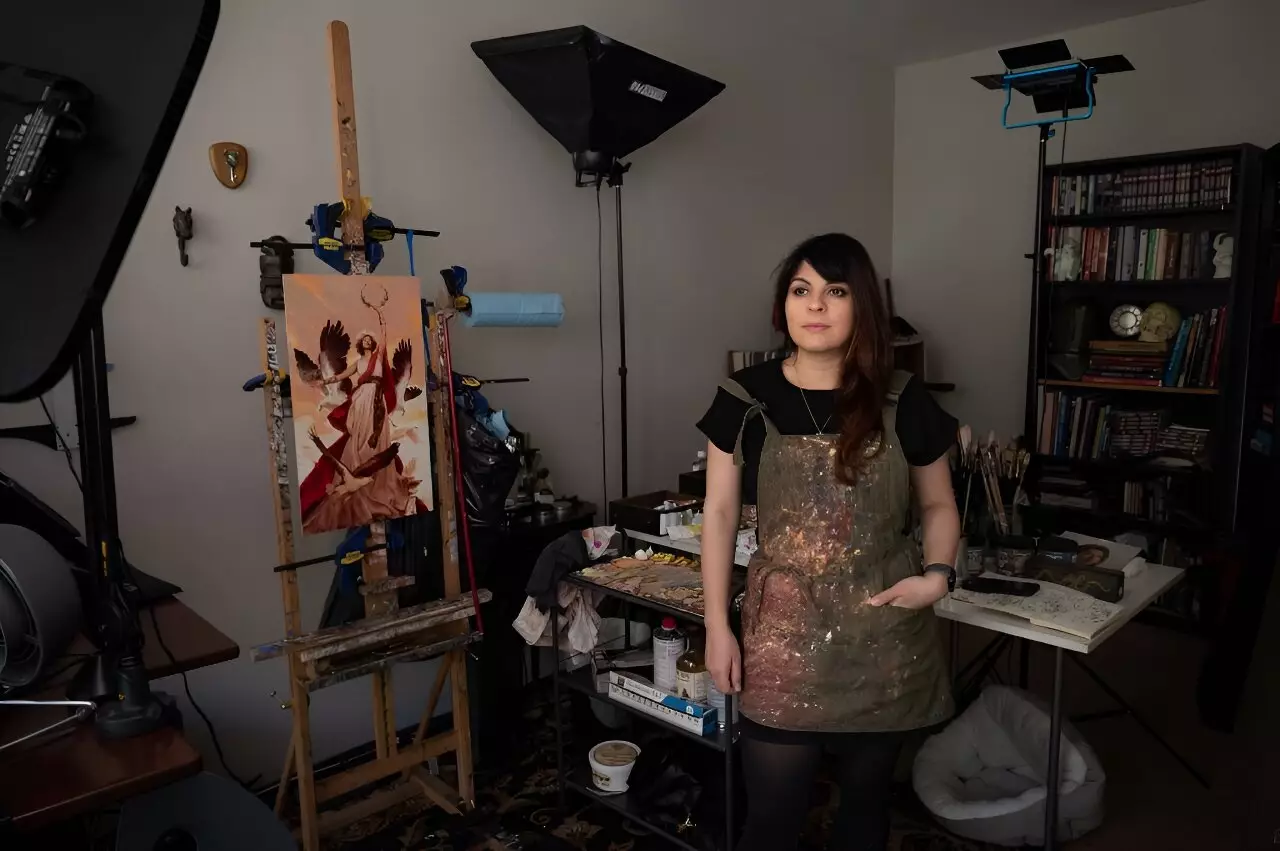The advent of artificial intelligence (AI) has brought a new wave of challenges for artists, as AI models now have the ability to replicate their styles without giving credit or compensation. However, a group of artists, alongside researchers from the University of Chicago, have joined forces to defend against such copycat activity. One such artist is Paloma McClain, an acclaimed US illustrator who found her art being used to train AI models without her permission. McClain’s frustration and belief in the importance of ethical technological advancement motivated her to seek a solution to this problem.
In her quest for protection, McClain discovered Glaze, a free software developed by the researchers at the University of Chicago. Glaze offers a unique approach by effectively outsmarting AI models during the training process. It does so by introducing subtle pixel tweaks that are imperceptible to human viewers but significantly alter the appearance of digitized artwork to AI. Professor Ben Zhao, one of the creators of Glaze, emphasized their aim to provide technical tools that safeguard human creators from invasive and abusive AI models. The development of Glaze was expedited, given the urgency of the problem, as many artists were suffering due to AI imitators.
Generative AI giants often utilize data for training purposes; however, a vast majority of the digital content used to shape AI’s capabilities, including images, audio, and text, is obtained from the internet without explicit consent. Since its release in March 2023, Glaze has been widely embraced, with over 1.6 million downloads. Recognizing the need for further protection, Zhao’s team is currently working on an enhancement for Glaze called Nightshade. This update aims to confuse AI by misinterpreting images, such as getting it to identify a dog as a cat. By strategically introducing “poisoned images” into the mix, Nightshade has the potential to make a noticeable impact on countering AI imitations.
Recognizing the need for comprehensive protection, startup Spawning developed Kudurru software, designed to detect attempts to collect large amounts of images from online platforms. Artists can then block access or provide altered images to disrupt the data being used to train AI models. Jordan Meyer, cofounder of Spawning, highlights the importance of protecting artists’ intellectual property and ensuring control over their creative output. The Kudurru network is integrated with over a thousand websites, indicating the growing awareness of the need for defense against AI-driven infringement.
To further empower artists and ensure consent and control over their work, Spawning launched haveibeentrained.com. This website features an online tool allowing artists to check if their artwork has been used to train AI models. Artists have the option to opt-out of future use, reinforcing their control and ownership rights. This initiative reflects the growing demand for transparency and accountability in the digital age.
While efforts are being made to protect visual art, researchers at Washington University in Missouri have focused on safeguarding audio content. The team developed AntiFake software, which enriches digital recordings with imperceptible noises, making it impossible to synthesize a human voice. Zhiyuan Yu, the Ph.D. student behind the project, emphasizes the importance of not only preventing unauthorized AI training but also combatting the creation of “deepfakes” – fabricated soundtracks or videos that falsely depict individuals saying or doing things they never actually did. AntiFake’s application extends beyond voice recordings to potentially include songs, providing a more holistic defense against AI exploitation.
Achieving a Balanced Future: Consent and Compensation
Amidst these ongoing efforts to protect artists’ rights, Jordan Meyer points out that the ideal solution should involve consent and compensation for the use of data in AI training. This vision aligns with the belief that the advancement of technology should benefit all parties involved, emphasizing ethical considerations and ensuring a fair and equitable future.
In the battle between artists and AI, the emergence of tools like Glaze, Nightshade, Kudurru, and AntiFake represents a significant step towards empowering creators and reclaiming artistic originality. Through these innovations, artists can protect their work, assert control over its usage, and advocate for ethical AI practices. While the journey towards a harmonious relationship between artists and AI continues, these developments signal hope for a future where creativity thrives, free from the shadows of imitations.


Leave a Reply